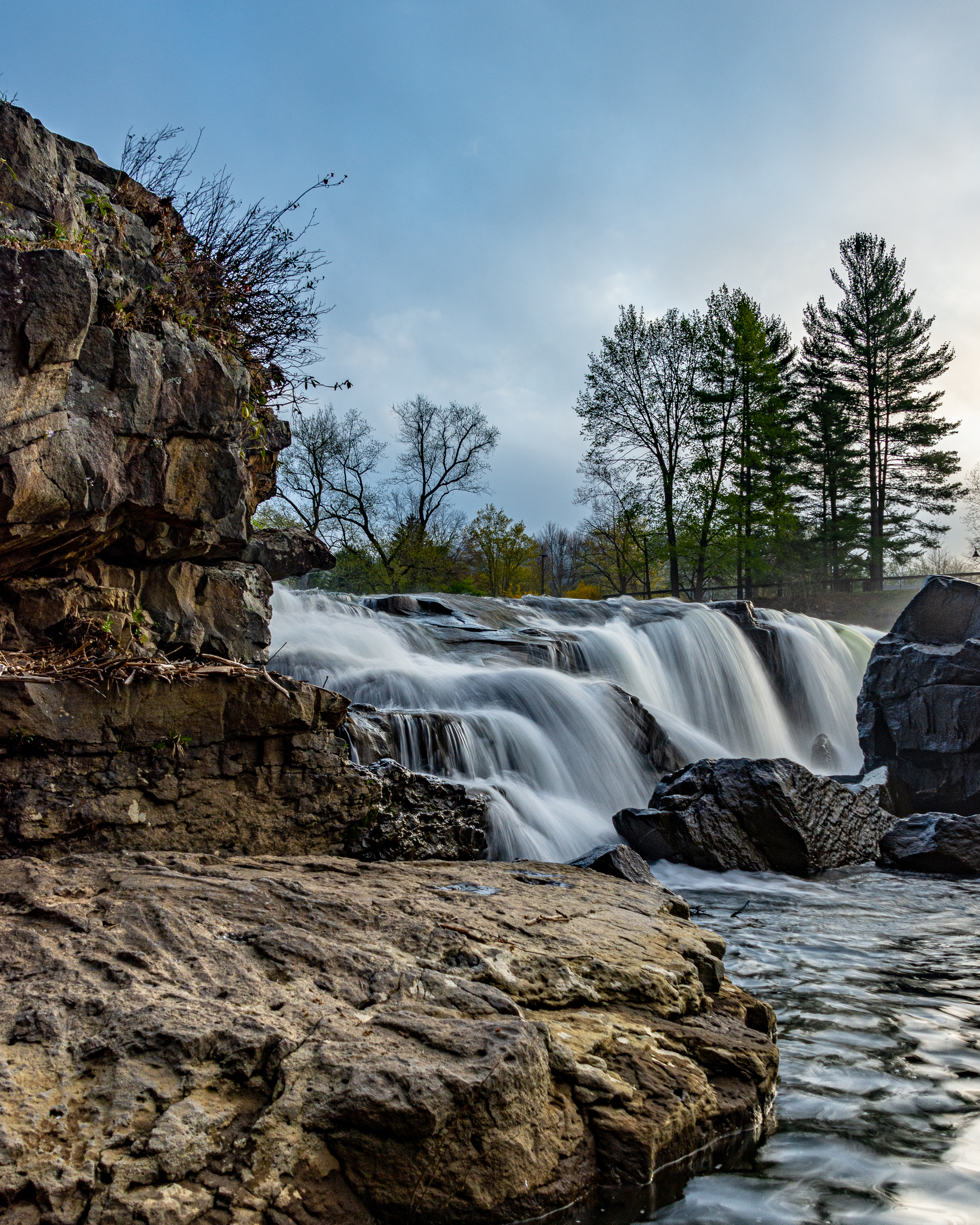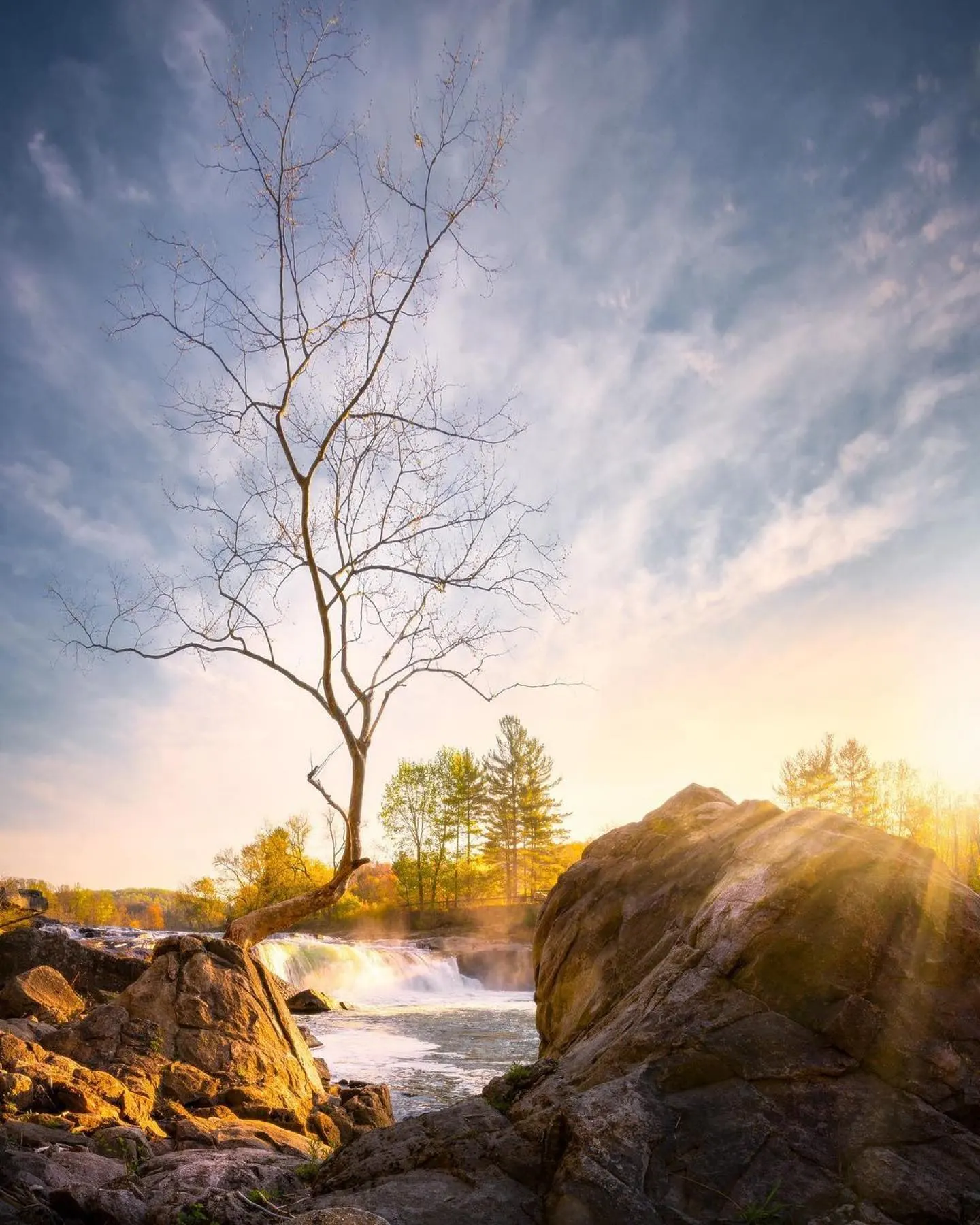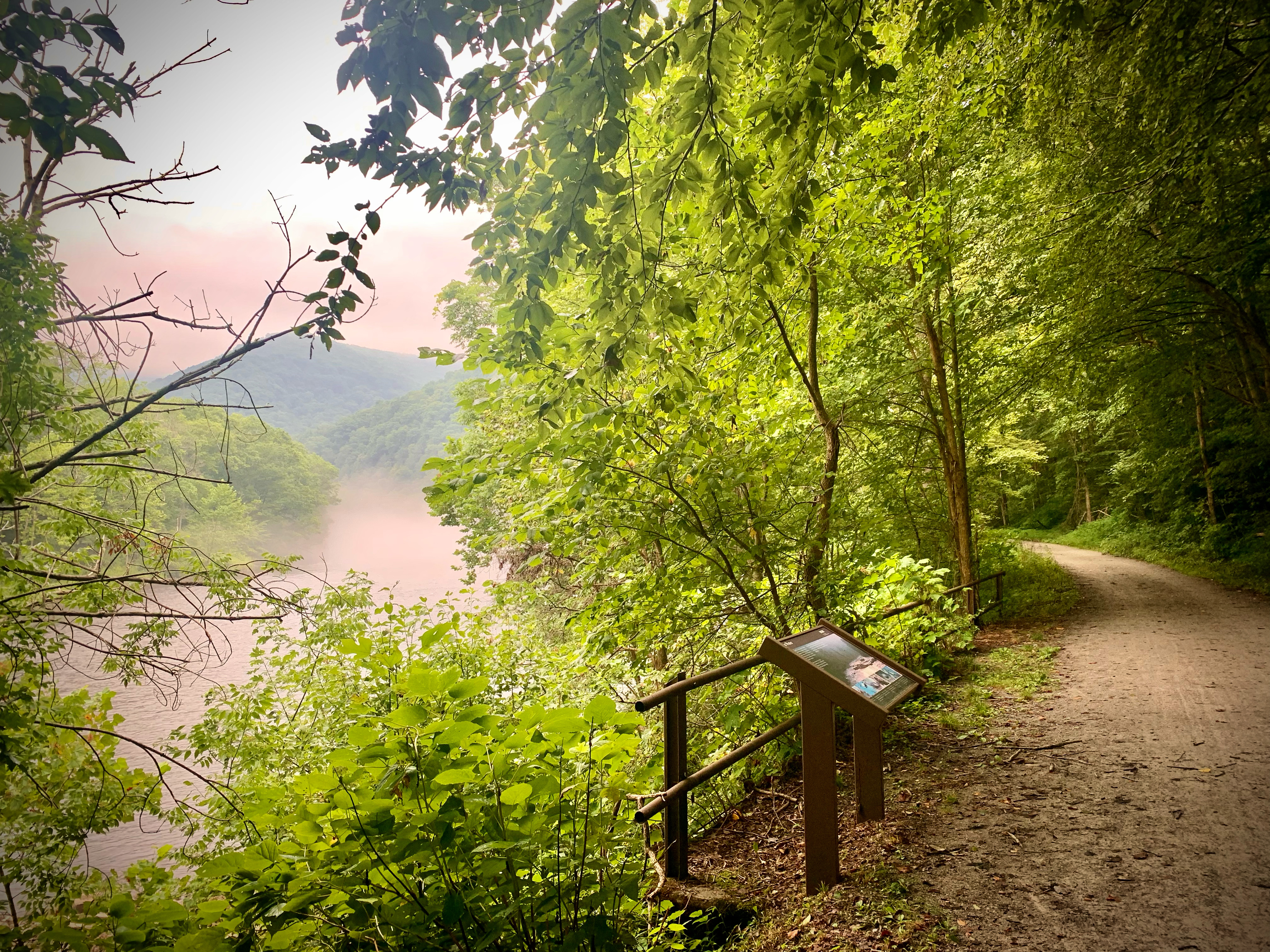Ferncliff Rock Ledges and Rapids

Where the Youghiogheny River begins its sweeping curve around Ferncliff Peninsula, an extraordinary geological showcase awaits visitors. Massive sandstone rock ledges create a natural terraced landscape that extends into the river, forming numerous small waterfalls and rapids. During summer months when water levels typically decrease, certain sections become shallow enough to create natural swimming areas—cool, refreshing pools nestled among the stone formations.
Beyond recreational opportunities, this location offers fascinating educational value for those interested in natural history. The sandstone surfaces frequently reveal ancient plant fossils, preserved impressions of vegetation that thrived millions of years ago when this region was a very different environment. These paleontological treasures provide visible evidence of the area's geological past and the dramatic climate changes that have shaped this landscape over time.
The complex arrangement of rock formations creates a natural labyrinth that invites exploration. Visitors can navigate through a maze-like arrangement of stone corridors, small chambers, and elevated platforms without venturing into the water. Each turn reveals new perspectives on the river and surrounding landscape, with the flowing water providing a constant auditory backdrop that changes in character from gentle burbling to more energetic rushes depending on water levels and your position among the rocks.
The interplay of water and stone has created numerous microhabitats throughout this area, supporting specialized plant communities adapted to specific conditions. From dry, sun-exposed rock faces supporting drought-resistant species to perpetually moist crevices harboring delicate ferns and mosses, this location showcases ecological diversity within a relatively small area. The mix of exposed rock, flowing water, and adjacent forest creates opportunities to observe the transition zones between these different environments.
Visitor Tips:
- Water shoes are recommended even if you don't plan to swim
- Bring a magnifying glass to better examine fossil specimens
- Morning visits often offer the best lighting for photography of the rock formations
- Summer weekday mornings typically provide the most peaceful experience
- Be prepared for changing sun exposure as there's limited shade on the rock surfaces
Safety Considerations:
While exploring the rock ledges, visitors should exercise caution as the surfaces can be extremely slippery, especially near the water's edge or where algae has formed. The rock formations contain numerous crevices and uneven surfaces that present tripping hazards. Those who choose to enter the water should be aware that water depths and current strengths can change suddenly, even in seemingly calm areas. Children should be closely supervised at all times. During periods of high water, swimming is not recommended as currents become stronger and previously visible hazards may be submerged. Always check water conditions before entering and never swim alone.


